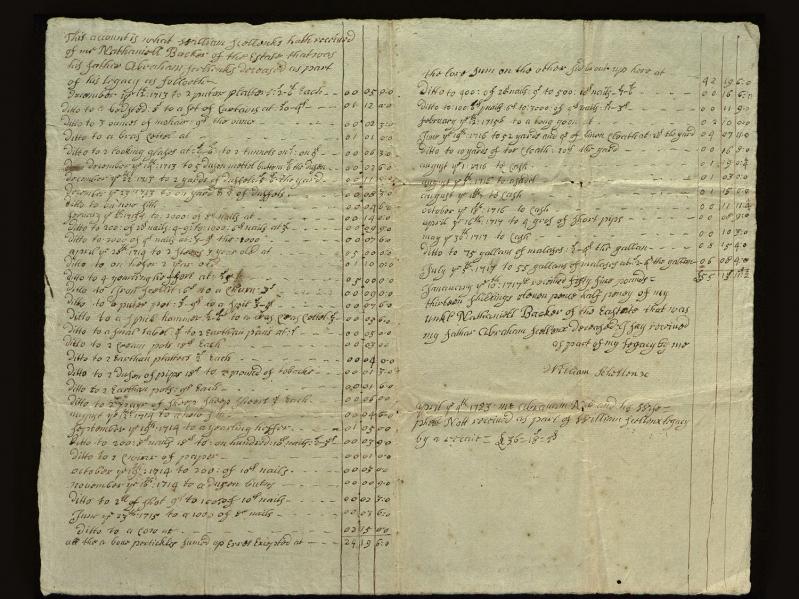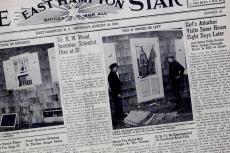This document records payments made to the heirs of Abraham Schellinger (1659-1713) by Nathaniel Baker. The record was made by William Schellinger (1694-1719), Abraham’s son, and it begins in 1713, when the inventory of Abraham’s estate was done. It appears to continue after the death of William, with a note about an April 9, 1723, payment to William’s widow, Phebe, and her second husband, Abraham Nott.
The record documents payments made largely as barter for other goods, from Nathaniel Baker to William Schellinger, to honor the debt Baker owed the then-deceased Abraham Schellinger, which William described as “part of my legacy.” Coinage in the colonies was limited, and barter was a frequent form of payment.
In the Dec. 8, 1713, inventory of Abraham’s estate, a note from William, the executor of his father’s estate, indicates that his “Uncle” Nathaniel Baker owed 154 pounds. This sum was quite significant, and more than the 132-pound value of Abraham’s entire estate, according to the inventory.
Baker often paid the Schellinger family in nails or yards of cloth, mohair, and linen. At other times he paid with mirrors, curtains, pipes and tobacco, earthen pots and pans, a hammer, a package of paper, a yearling heifer, and sheep. After 1717, he began to pay with molasses, which may reflect a change in the access to items shipped from the sugar islands of the Caribbean.
At the time of William’s death in 1719, Baker had repaid only about 55 of the 154 pounds he owed Abraham Schellinger. An additional payment was made to William’s widow, then Phebe Schellinger Nott, for 36 pounds, bringing the total value of Baker’s payments to around 91 pounds.
It’s unknown if he ever finished repaying the Schellinger heirs, but the decade of payments recorded here offers a glimpse of what the Baker and Schellinger families had access to in colonial East Hampton, along with how valuable those items were.
—
Andrea Meyer is the Long Island Collection’s head of collection.




